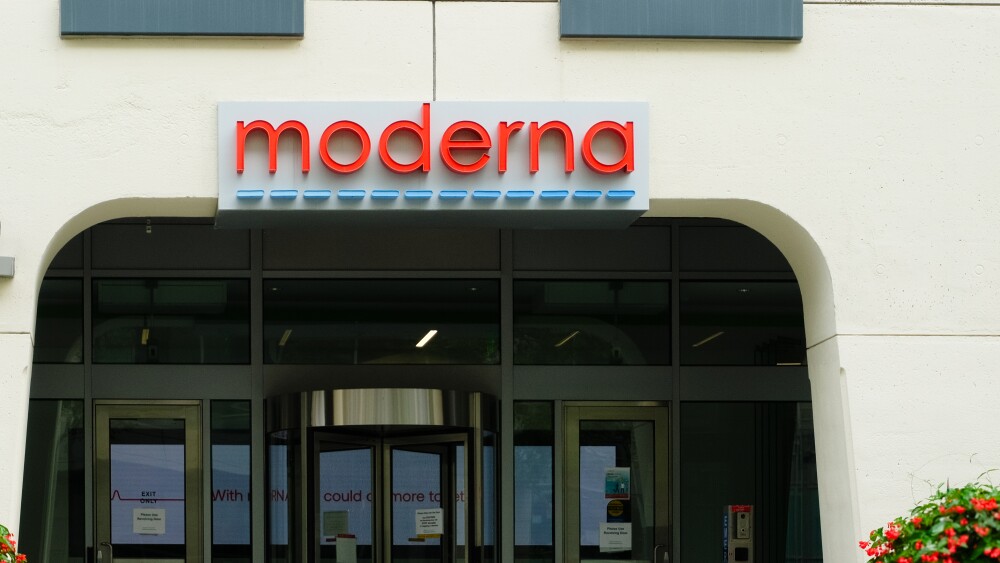Advances in immuno-oncology and adaptive cell therapy that began about a decade ago are enabling fresh, biology-driven approaches to bring therapeutic cancer vaccines closer to fruition.
FatCamera/Getty Images
The concept of therapeutic cancer vaccines emerged in the late 1980s but, some 35 years later, it still hasn’t resulted in an approved product. The advances in immuno-oncology and adaptive cell therapy that began about a decade ago, however, are enabling fresh, biology-driven approaches with the potential to bring therapeutic cancer vaccines much closer to fruition.
One challenge has been the question of how to elicit an immune response to a tumor, which is a mutated part of the self rather than a foreign entity.
“Another problem is that tumors from different sites in the body have different mutations,” said Muhammad Al-Hajj, Ph.D., CSO at IO Biotech in an interview with BioSpace. So, while a specific cancer vaccine might work against one tumor, it won’t wipe out all the tumor cells throughout the body.
A third hurdle is that tumors protect themselves with a shield of normal cells. For example, Al-Hajj said, “In breast cancer, the percentage of actual tumor cells within the mass is less than 50 percent. In pancreatic tumors, 90 percent of the cells are non-cancerous. That’s why pancreatic cancer is so difficult to treat. It brings a whole network of normal cells,” that help protect the cancerous cells from the immune system. Therefore, “You need something that could wipe out most or all of the cancer cells,” he explained.
Boosting the Potential of Immuno-oncology
Checkpoint inhibitors, a leading immuno-oncology strategy, aren’t effective for all patients. They also have multiple toxicities when combined with other agents.
IO Biotech has a technology platform, called T-win, that activates T cells to directly kill immunosuppressive cells and gently modulate the tumor microenvironment to be less receptive to tumors. Its lead candidate, IO102/IO103, targets the indoleamine 2,3-dioxygenase (IDO) enzyme and programmed death ligand 1 (PD-L1).
What’s particularly novel is that rather than just targeting the cancer cells within the tumor, IO Biotech is developing a vaccine against the key elements within the tumor that pushes the T cells away.
“Vaccination… modulates the environment in a way that is very gentle and non-toxic,” Al-Hajj said. “This is not a standard vaccine. It’s a vaccine for tumor microenvironment targets. The idea is to modulate the tumor microenvironment and to combine (the vaccine) with a very powerful immune therapy…like a checkpoint inhibitor…to allow them to infiltrate better.”
A Phase I/II trial of 30 melanoma patients showed that vaccination elicited a response in about 80 percent of the patients, whereas a checkpoint inhibitor elicited a response in slightly less than 50 percent.
“Biomarker analysis proved the cells start to infiltrate the tumor. Now we are working to prove it in a much larger trial,” Al-Hajj shared. Additional clinical trials are underway in first-line solid tumors and as a neo-adjuvant/adjuvant for solid tumors for lung, head & neck and bladder cancers. The vaccine holds FDA breakthrough designation.
There are, of course, many different approaches to therapeutic cancer vaccines.
Targeting the Lymph Nodes
Elicio Therapeutics is targeting the lymph nodes - which the company calls “the brain center of the immune system” - with its Amphiphile (AMP) platform.
“The role the lymph nodes play in organizing the immune response has been known for a very long time,” said Pete DeMuth, Ph.D., CSO at Elicio. But, “I think we just assumed that after injection, everything sort of went there eventually so it didn’t need a lot of intentional design consideration.
“Over time, though, scientists discovered there actually were very large differences in the way injected agents distribute throughout the body,” DeMuth told BioSpace. “Now we’re starting to see an emphasis on lymph node targeting because we understand enough about the underlying biology to design technologies that allow us to optimize lymph node delivery.”
One of the first challenges in this approach is to design molecules of the optimal size to reach the lymph nodes.
“Molecules that are too large or too small won’t get there very well,” DeMuth said. Then, once the molecules arrive, they must be delivered to the right cells within the lymph nodes.
So, Elicio founder and MIT professor Darrell Irvine, Ph.D., designed AMP to direct drugs or other payloads to the lymph nodes. His approach leveraged engineering, material science and biology.
“We modify a vaccine molecule by linking a lipid to it to teach the immune system how to collect it and use it as information to develop a response that will protect against cancer,” DeMuth explained. “The lipid allows the vaccine to bind to albumin (a protein in the tissue), which acts as a shuttle bus to transport things from the tissue into the lymph nodes. The AMP is like the bus pass that allows these agents to get on the shuttle bus.”
This system can be applied to many different vaccine or drug agents, including – possibly – drugs “that were limited in their activity because they couldn’t reach the immune cells or because they went to other places in the body and caused toxicities,” he suggested.
“By giving them this AMP modification, (they go) straight into the lymph nodes where they can modulate the biology of the immune cells and simultaneously reduce their exposure to other sites in the body that might drive safety concerns or have toxicities that would limit their usefulness.”
The AMP system is currently undergoing a Phase I trial to treat mutant KRAS-driven cancers in the gastrointestinal tract or lungs. Early results haven’t been released, but DeMuth says he is “very optimistic given our preclinical results and the history around this type of therapy.”
Going After Cancer Cells’ Survival Mechanism
In another advance, IMV Inc. recently announced positive data in metastatic bladder cancer patients using its cancer vaccine, Maveropepimut-S (MVP-S) – also known as DPX-Survivac.
“It shows complete responses, even in patients who had already progressed through immune checkpoint inhibitors. Response are beyond 600 or 700 days and are still ongoing,” said Jeremy Graff, Ph.D., CSO, in an interview with BioSpace.
“What makes MVP-S unique among cancer vaccines is that it’s designed to instigate an immune response to a very common cancer protein called survivin,” Graff said. “Survivin is a protein that many cancers up-regulate during progression. As the name implies, it actually enables the survival of cancer cells.
“What distinguishes MVP-S from prior cancer vaccines,” Graff explained, “is that we not only put the information into our therapeutic to provide a specific survivin signal, but we also put information to instigate the functionality of antigen-presenting cells (APCs) as well as CD4 T cells.” This approach encapsulates multiple pieces of instruction that drive an immune response.
The duration of response for survivin-specific T cell activation exceeds two years. Duration is particularly important. “CAR T cells often don’t persist even though we put billions of cells into patients,” Graff noted.
Data released from a Phase IIa study in summer 2021 showed durable responses among ovarian cancer patients that extended progression-free survival to about 20 months in nearly half the patients (who had already been exposed to multiple chemotherapies) who were treated with MVP-S. This was compared to about 10 to 12 months for those treated with chemotherapy.
A new trial has been submitted to the FDA and Health Canada to assess the clinical benefit for MVP-S and low-dose intermittent cyclophosphamide in platinum-resistant ovarian cancer patients.









